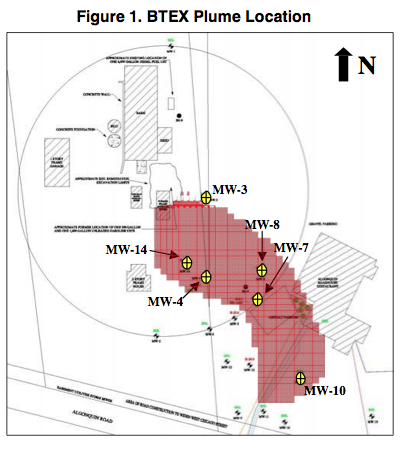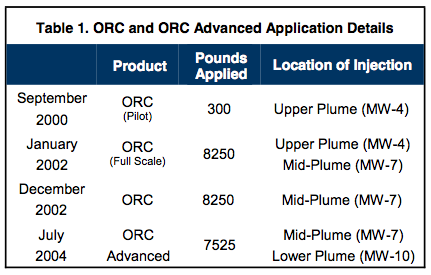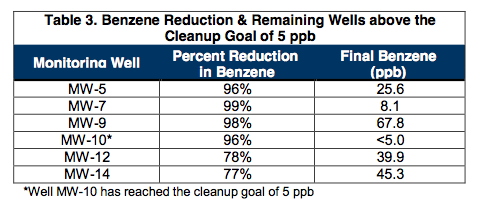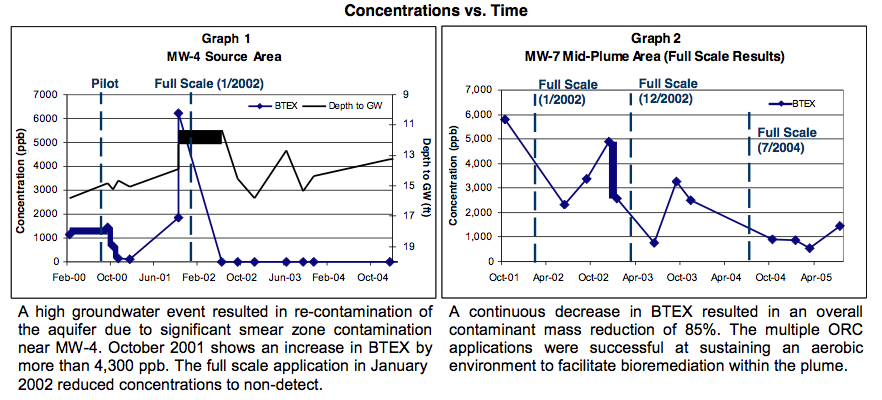Successful Pilot Test Results in Full-Scale Treatment of Large BTEX Plume
CASE SUMMARY
Refueling Station – Algonquin, IL
Leaking underground storage tanks at a refueling station resulted in a benzene, toluene, ethylbenzene and xylene (BTEX) plume in the underlying sand/gravel aquifer. The plume covered 1-acre and extended 390 feet downgradient from the source area, with a total BTEX concentration exceeding 24,000 parts per billion (ppb). In an effort to mitigate the source, 795 cubic yards of contaminated soil was excavated; however, further groundwater monitoring revealed that BTEX concentrations still exceeded the Illinois EPA cleanup levels. To address the remaining contamination and reduce concentrations to the state cleanup goal, a remediation plan was implemented using Oxygen Release Compound (ORC®) and ORC Advanced®.
REMEDIATION APPROACH
The remediation objective was to reduce petroleum hydrocarbon contamination, mainly benzene, to the state cleanup goal. A pilot test was performed using ORC to observe the effectiveness of reducing BTEX concentrations. Successful reduction was achieved within 4 months and a full-scale application was implemented. The full-scale application was focused near the source area as well as within the mid-plume area (near MW-7 & MW-8). Two applications followed within the mid- and lower plume areas to continue BTEX reduction.




- Application Type: Grid & Barrier Application
- Soil Type: Clay above Sand/Gravel
- Groundwater Velocity: 0.25 ft/day
- Treatment Area: 43,500 ft2
- Injection Spacing: 10–20 feet
- Product Cost: $171,600

Five of the ten contaminated monitoring wells achieved the remedial objective for benzene as well as all other contaminants following the ORC and ORC Advanced injection. Benzene reduction for those wells that have not yet achieved the cleanup goal are listed in Table 3. Overall, a benzene mass reduction of over 95% was achieved. It is expected that the remaining contaminant concentrations will reach cleanup goals as monitoring continues.


 Americas
Americas Europe
Europe Français
Français Deutsch
Deutsch Italiano
Italiano Español
Español


